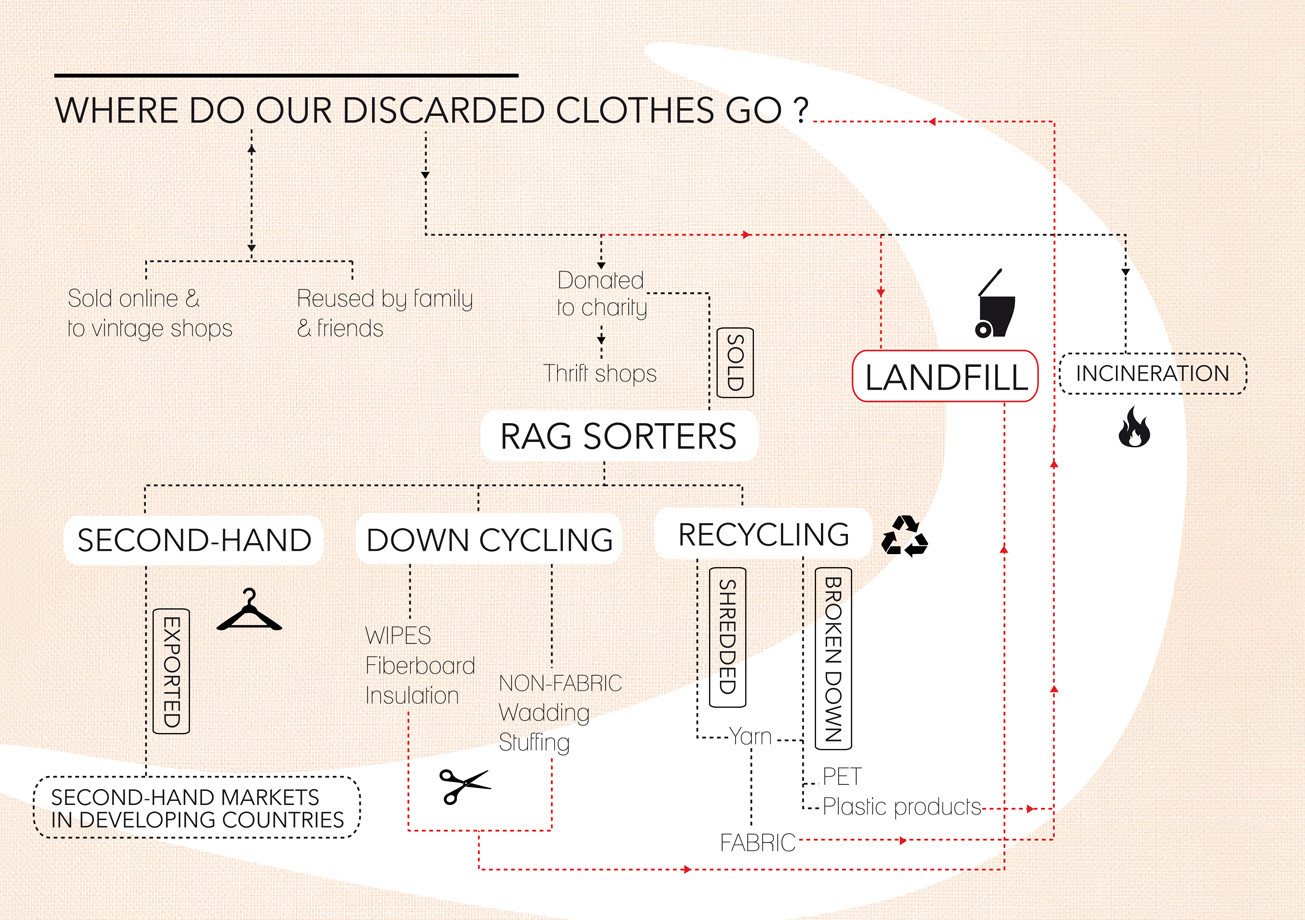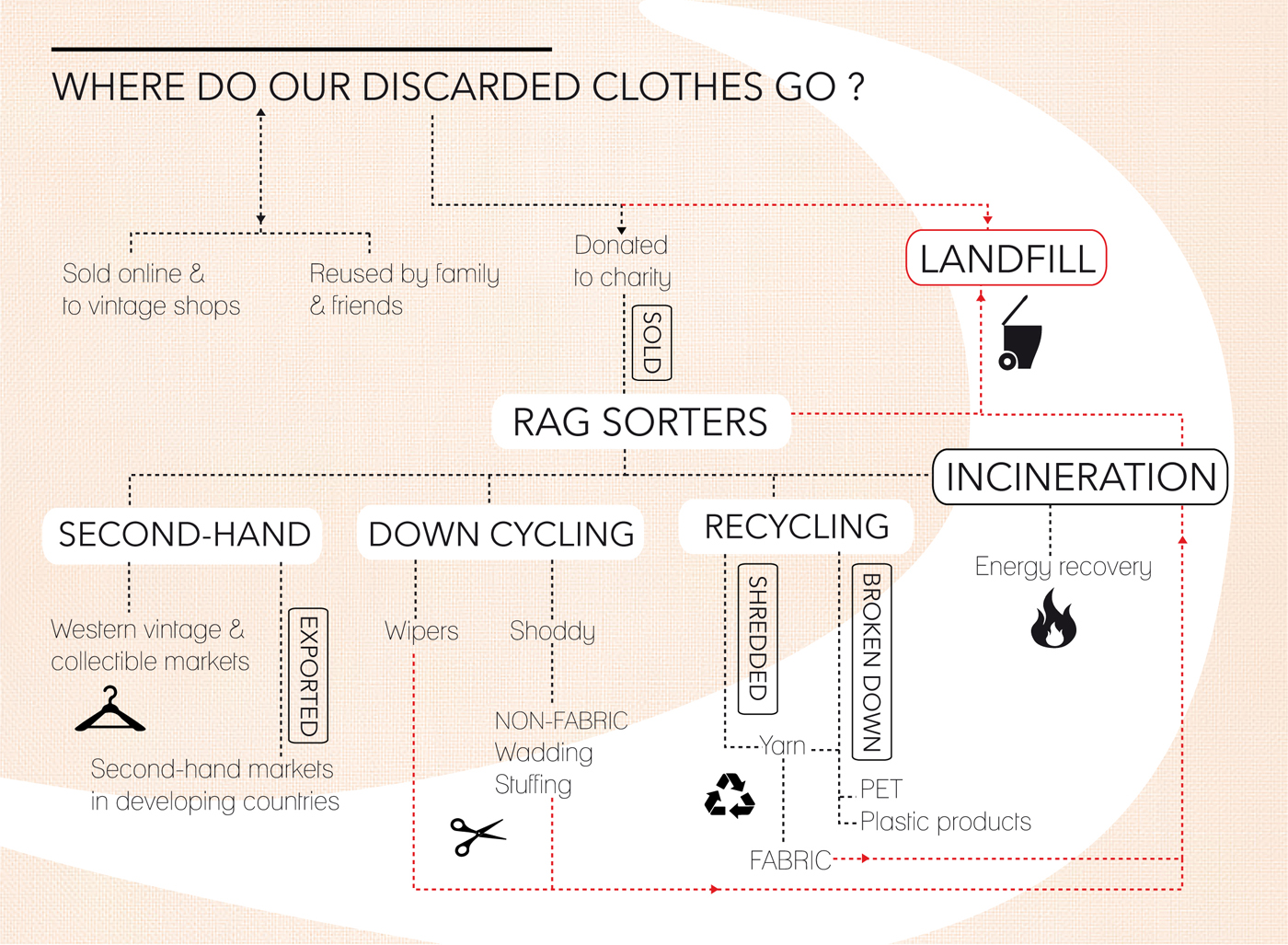
Diagram by Magali An Berthon, © Cooper Hewitt Smithsonian Design, 2016.
What happens to all of our clothes after we no longer want them? This diagram summarizes the intricate journey of post-consumer textile waste, once it leaves our households.
According to Jackie King, executive director of Secondary Materials and Recycled Textiles (SMART), an international recycling association representing used clothing, wiping material, and fiber industry companies, about 80 percent of the donated clothing is collected by textile recyclers. A large part is unsuitable for resale. Of this, 30 percent is turned into wipes for commercial and industrial use, about 20 percent is recycled into fibers that are then made into a variety of other products, including carpet padding, insulation for autos, and pillow stuffing. Finally about 45 percent of the donated clothes is destined for export, especially to developing countries in Central and South America, Asia, and Africa.
Sources:
Council for Textile Recycling. The Life Cycle of Secondhand Clothing. Accessed March 2016, http://www.weardonaterecycle.org
Jana Hawley. “Understanding and Improving Textile Recycling: A Systems Perspective” in Blackburn, Richard Simon (ed.) Sustainable Textiles: Life Cycle and Environmental Impact. Cambridge: Woodhead Publishing, 2009, 179-198.
Jackie Northam, “The Global Afterlife of your Donated Clothes” in NPR, May 2013, accessed on March 9, 2016.
http://www.npr.org/sections/parallels/2013/05/21/185596830/the-global-afterlife-of-your-donated-clothes
About the Author
Magali An Berthon is a textile researcher and designer, focusing in particular on world textile crafts and sustainable fashion. After an MFA in textile design in Paris, she studied textile history at the Fashion Institute of Technology NY on a Fulbright fellowship in 2014. Since June 2015, she is a curatorial fellow at the Textile Department at Cooper Hewitt, Smithsonian Design Museum.
Scraps Stories
This post is part of the blog series Scraps Stories dedicated to exploring sustainable textiles and fashion, in relation to the exhibition Scraps: Fashion, Textiles, and Creative Reuse.
